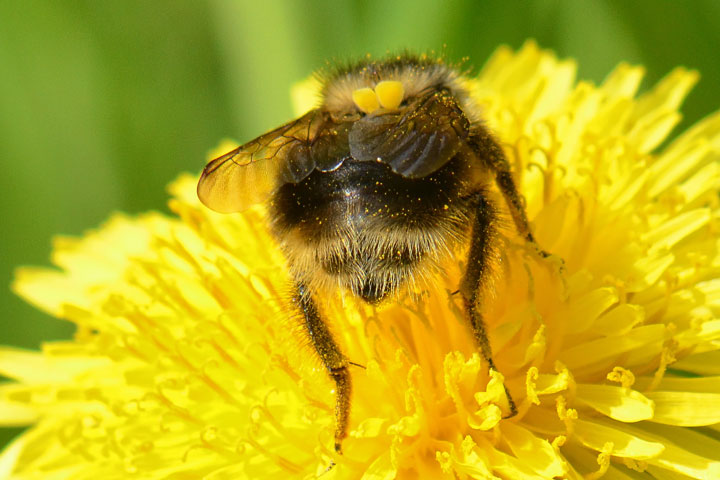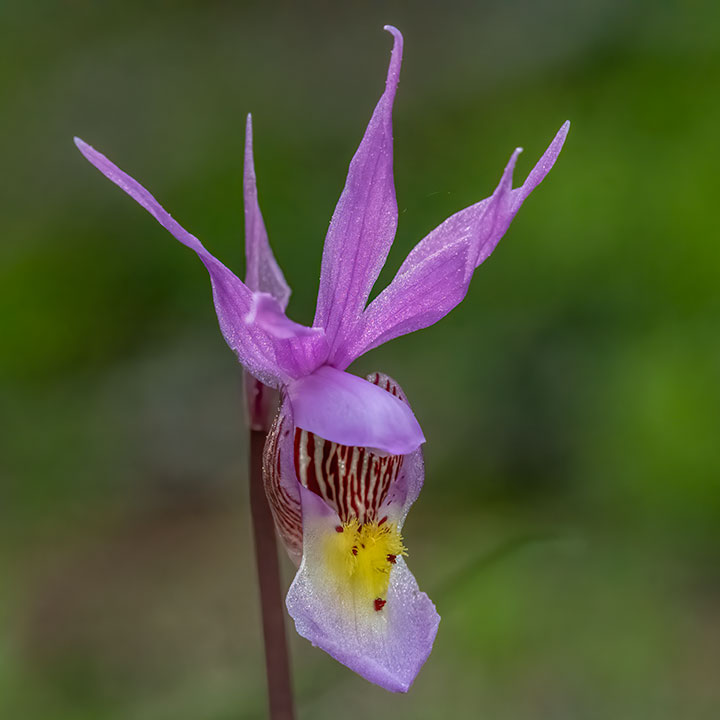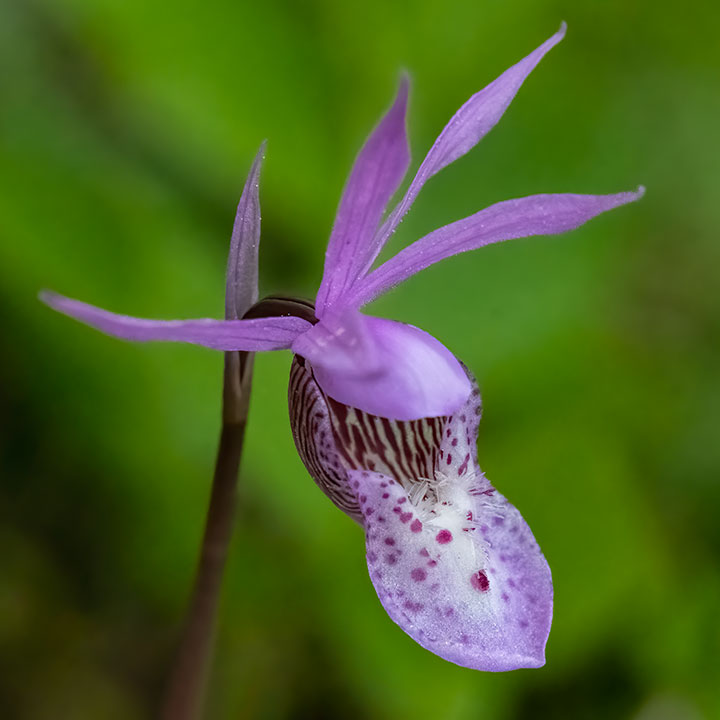So far, I have photographed six species of wild orchids in Kokanee Creek Park. Always the first to bloom is the beautiful fairy slipper. It has two varieties, eastern and western; the Park gets each.
As with all flowers, the fairy slipper (Calypso bulbosa) is pollinated by the insects it attracts, in its case the pollinators are primarily early season bumble bee queens. However, this beauteous flower cheats on the contract between flowers and insects. That contract is the one where flowers offer nectar and pollen to insects in exchange for the service of pollination.

The two yellow objects on this bee’s thorax are pollinia placed inaccessibly there by a fairy slipper.
Alas, the fairy slipper presents a vanilla scent (suggesting to the bee that it has nectar) and fake stamen (implying that it offers pollen), and these lure bees, but the flower provides the bee with neither pollen nor nectar. Rather, the flower glues some pollinia (packages of pollen) onto an inaccessible location of the bee’s thorax in a way that provides the bee with zero benefit. The bee inadvertently then carries the pollinia to another flower which it pollinates.
The fairy slipper provides no payment in exchange for the bee’s service. By the time this early-season bee gets wise to the ruse, pollination is complete. The fairy slipper has accomplished its objective through deception.
An eastern variety of fairy slipper. Here, the fake stamen are yellow.

A western variety of fairy slipper. Here, the fake stamen are white.


Who would have thought such stunning orchids could be found outside of the florist shop!
Wow…… Alistair…. what an extraordinary and beautiful photograph……….. Very interested in these little natural beauties…… I have a photograph of a remarkable bright yellow mushroom I photographed in Kokanee many years ago….. only have a framed image, but will drop by to show it to you soon. John Schnare
I don’t think I’ve ever seen Calypso bulbosa with yellow stamens. And also didn’t know how the ‘fake pollinia’ worked – thanks for this educational post! A question for you — sometimes I see a pair of pointed projections (called “horn-like” in some descriptions, I call them ‘teeth’) facing downward from the bottom of the pouch-like ‘slipper.’ And sometimes they’re not there. Do you know what they are or what purpose those serve?
Beautiful photos as always.
Sarah, thank you for the insight on the horns. I was not aware of them. Yet, when I went through my pictures I found some with horns. They apparently are enticements in the ruse to attract pollinators. Incidentally, the pollinia are not fake. Pollinia are a pollination transfer mechanism used by a number of flowers.